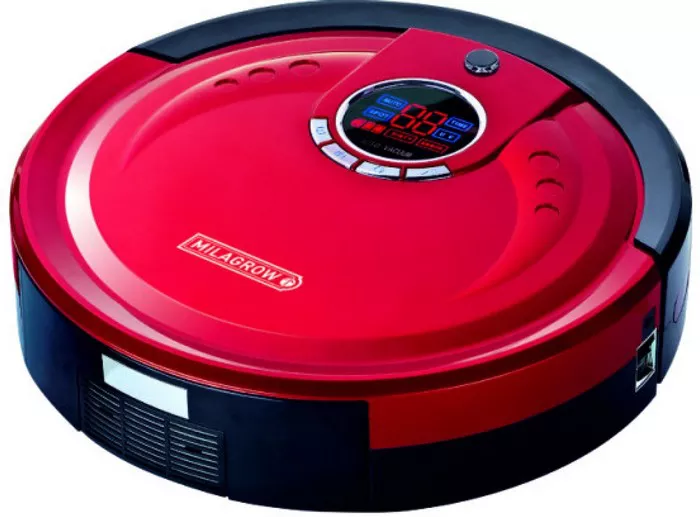In the modern era of convenience-driven technology, the robot vacuum stands as a testament to human innovation in household cleaning. No longer confined to the realm of science fiction, these autonomous devices have become a staple in many homes around the world, revolutionizing the way we maintain cleanliness. But when exactly was the robot vacuum invented, and how has it evolved over time? Let’s delve into the history and development of this ingenious household appliance.
Early Beginnings: The Conceptualization Phase
The idea of a robotic vacuum cleaner dates back to the mid-20th century when inventors and visionaries began conceptualizing automated solutions for mundane household tasks. One notable precursor to the modern robot vacuum was the “Electrolux Trilobite,” developed by Swedish company Electrolux in the late 1990s. Although limited in functionality compared to today’s models, the Trilobite laid the groundwork for future advancements in robotic cleaning technology.
Pioneering Innovations: The Birth of the Robot Vacuum
The true birth of the robot vacuum can be traced back to the early 2000s when companies like iRobot and Neato Robotics entered the scene with groundbreaking designs. In 2002, iRobot introduced the “Roomba,” a compact, disc-shaped robot equipped with sensors and brushes capable of navigating and cleaning floors autonomously. The Roomba quickly captured the public’s imagination and became synonymous with robotic vacuum cleaners.
Around the same time, Neato Robotics introduced its own contender, the “Neato XV-11,” featuring a distinctive D-shaped design optimized for reaching into corners and edges with greater efficiency. These early models marked a significant leap forward in home cleaning technology, offering consumers unprecedented convenience and freedom from manual vacuuming.
Technological Advancements: The Rise of Smart Features
As the demand for robot vacuums grew, so did the pace of technological innovation in the field. Manufacturers began incorporating a plethora of smart features into their products, further enhancing their capabilities and usability. Advanced sensors enabled robots to navigate obstacles and map out cleaning routes more effectively, while Wi-Fi connectivity allowed users to control their devices remotely via smartphone apps.
Additionally, the integration of machine learning algorithms and artificial intelligence empowered robot vacuums to adapt to their environments, learning from experience to optimize cleaning performance over time. Features such as voice control, scheduling, and multi-room mapping became standard offerings, elevating the user experience to new heights.
Market Expansion and Competition
The success of early robot vacuum models spurred a wave of competition in the market, with numerous companies vying for consumer attention and market share. Established electronics manufacturers, as well as startups, joined the fray, each seeking to distinguish their offerings through innovation and performance.
The proliferation of options led to a diversification of product lines, with robot vacuums available in various shapes, sizes, and price points to suit different preferences and budgets. Some models prioritized suction power for deep cleaning, while others focused on maneuverability and quiet operation for enhanced user experience.
Addressing Limitations: Overcoming Challenges
Despite their technological prowess, robot vacuums faced several challenges and limitations that manufacturers sought to address through iterative improvements and breakthrough innovations. One common issue was the inability of early models to navigate complex environments effectively, leading to missed spots and tangled brushes.
In response, manufacturers developed solutions such as advanced mapping algorithms, improved sensor arrays, and better brush designs to enhance navigation and cleaning efficiency. Additionally, advancements in battery technology extended runtime and charging capabilities, reducing the need for frequent recharging and allowing for more extensive cleaning sessions.
The Future of Robot Vacuums: Looking Ahead
There are no indications that the development of robot vacuums will stop in the near future. These gadgets will be able to navigate and clean with previously unheard-of accuracy and intelligence because to emerging technologies like lidar, simultaneous localization and mapping (SLAM), and object recognition.
Furthermore, the incorporation of robotic vacuum cleaners into more extensive smart home networks has remarkable opportunities for smooth automation and interaction with other networked gadgets. In the far future, your robot vacuum will work in tandem with your smart lighting, security system, and thermostat to maximize energy efficiency and home security while maintaining immaculate floors.
Conclusion
The invention of the robot vacuum represents a significant milestone in the history of home cleaning technology. From humble beginnings as a novel concept to becoming indispensable household appliances, robot vacuums have transformed the way we maintain cleanliness and efficiency in our homes. With continued innovation and advancements on the horizon, the future of robotic cleaning promises to be even more exciting and revolutionary.

